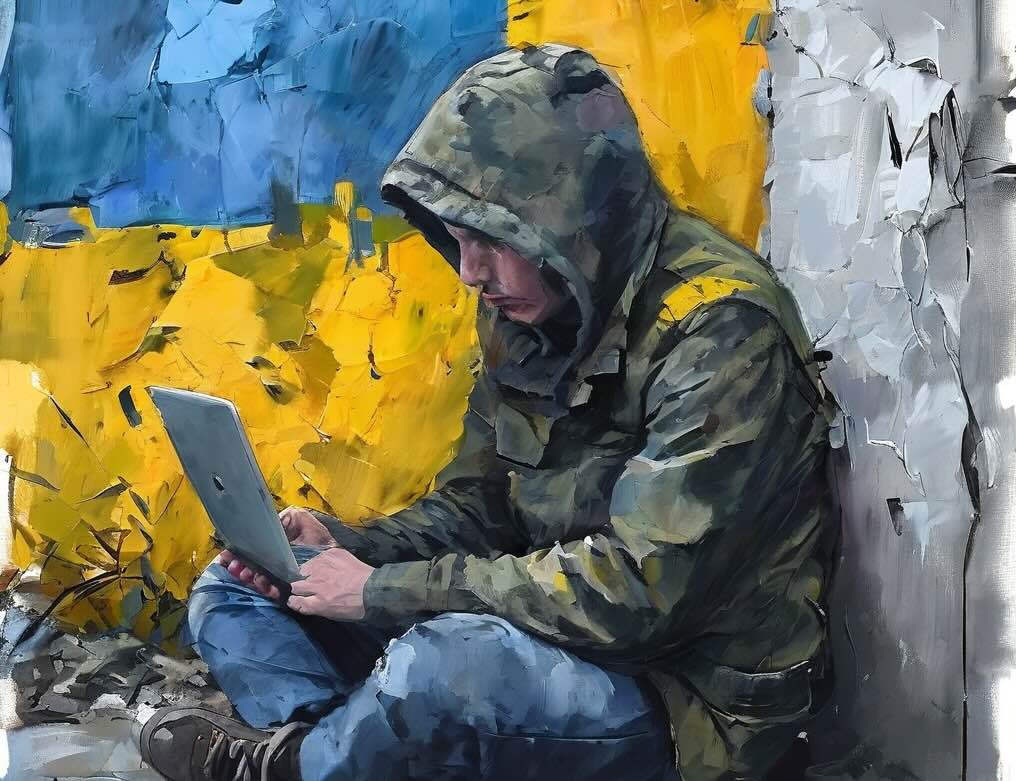Commercial open-source intelligence (OSINT) gathering tools are only becoming more common, although few who provide such resources have openly stated that they want users’ help to hunt war criminals. Enter X-Ray Contact, a Ukrainian intelligence company providing its toolkit for free to the public in a grassroots effort to allow anyone to fight the Russian invasion.
“The idea to create X-Ray Contact emerged after the full-scale invasion of Ukraine in 2022,” explained Hanna, the CEO of X-Ray, in an interview with The Debrief. “Our team thought about the new risks for cybersecurity and information literacy during the war. We believed it would be useful for people to boost personal safety by being able to verify the identity of those who contact them online or by phone.”
Hanna and the rest of her staff, all residents and citizens of Ukraine, choose to remain anonymous for safety reasons. With over 15 years of experience in the investigation field, Hanna brought together a team of software engineers and analysts. Prior to the Russian invasion, X-Ray specialized in investigations, person of interest research, and market research.
“However, since 2022, we’ve been solely focusing on developing X-Ray Contact as a high-quality product to enhance users’ personal security,” she explained.
X-Ray Contact integrates large datasets from about 15 providers. A user can simply type in a name, an email address, a social media link, a phone number, or even upload an image, and the tool begins to scour those datasets for matches.
“If the person has been located in the data of our providers,” explained Alex, the company’s Chief Research Officer, “the customer receives a comprehensive report with information about the person’s online identity.”
Ukraine has not only become the target of bullets and bombs, it has become a massive target for cyber attacks and propaganda. The team behind X-Ray Contact knew that once the physical battle lines had been established, Russia’s strategy would be to target Ukrainians themselves, not just with guns, but with fraudulent scams, ransomware attacks, hacking, and identity theft.
“We designed X-Ray Contact to be a tool that is useful to international clients due to the diversity of providers,” Hanna explained. “Therefore, the service is not confined only to the Ukrainian market but is popular among US and European clients. However, as we are proud to be a Ukrainian company, we are also committed to using our platform to help expose Russian targets.”
And this is where the general public can help.
In late February of 2022, Russian forces entered the city of Bucha on their march towards Ukraine’s capital, Kiev. Russian forces held the city for two months before they were forced to retreat due to a Ukrainian counter-offensive. In early March, stories began to emerge that Russian troops were killing civilians in the city. Many other similar stories began to appear, but the full scope of those crimes became known when Ukrainian forces entered the city on April 1st, 2022.
Images and videos of murdered civilians, many of whom were bound by rope when they were shot, began to appear on social media. The coming weeks would indicate that the situation was far worse and more barbaric. According to multiple outlets, the United Nations, and Human Rights Watch, Russian soldiers were participating in large scale looting, kidnapping, rape, torture, and the indiscriminate mutilation and killing of civilians, including children.


Grassroots OSINT groups, as well as professional intelligence companies like Ukraine’s Molfar, have been hard at work collecting as much information on Russians who were in Bucha during the occupation. Molfar, for example, has a published a list here. The goal is to collect as much data as possible so that future investigators and prosecutors have a wealth of data to use in war crimes legal cases.
However, it goes beyond Bucha and into a grueling fight for the life and spirit of a nation, and in the often shadowy Ukrainian OSINT world, it is open season on Russian soldiers, supporters, propagandists, and cybercriminals.
“The Russian search feature is our way of using our resources to aid fellow Ukrainians who resist the invasion. People can use search channels like emails, phone numbers and social media links without any payment if they are looking up a Russian,” Hanna told The Debrief. The company freely provides its services to Ukrainian authorities as well.
“X-Ray Contact is aimed to be a convenient tool to accomplish searches on Russian targets for both amateurs and OSINT pros. We hope that our free Russian search will be an incentive to reveal the identities of more war criminals and propagandists with minimum effort,” Hanna elaborated.
The team is unapologetic, often referring to their Russian targets as свиня (“pigs” in English) on their website. In a call with Marianna, the company’s head of marketing, she explained that living under the constant bombardment of Russian drones and missiles, making fun of Russia is just part of the daily OSINT work and community.
“It has a vibe,” explained Gabrielle Joni Verreault, a bioethicist and PhD student at the University of Montreal’s School of Public Health whose research focuses on civilian involvement in modern warfare. Joni Verreault spent six months in Ukraine, meeting with soldiers and civilians alike, cataloging their stories about how they use off-the-shelf technology and social media to aid in the war effort.
“It’s a very unique and soothing relationship that you develop with these groups. It’s a large community of people who you will probably never meet, but they work, often for free, to collect information in order to keep you safe,” Verreault said.
She told The Debrief that many Ukrainians subscribe to online texting groups run by small grassroots OSINT operators. “They monitor metrics from the frontline and Russian military activity, and they can literally save your life when the air raid sirens go off,” she explained. “A particular OSINT channel I followed always wrote Надобраніч – good night – to the channel every f***ing night. When you live under the stress of possibly getting killed by a Russian bomb, reading that ‘good night’ is incredibly comforting.”
It’s clear that companies like X-Ray know that, in the modern world, those who can’t carry a gun still want to help, and making that barrier as low as possible allows for a lot of people who help.
“Our rule of thumb is ‘any information found online is a fair game’ but we don’t use any intrusive techniques such as hacking,” Alex said. “The Russian search contains information from leaked databases that are available openly online. We aggregate all this open-source intelligence on our platform, so it is easy and convenient to automate an OSINT search with one tool.”
It is clear that OSINT is thriving, and for those living in a war zone like Ukraine, it can be a powerful weapon, or even a survival tool.
“It’s our contribution to the fight against the common enemy,” Hanna concluded.
MJ Banias covers security and technology with The Debrief. You can email him at mj@thedebrief.org or follow him on Twitter @mjbanias.

